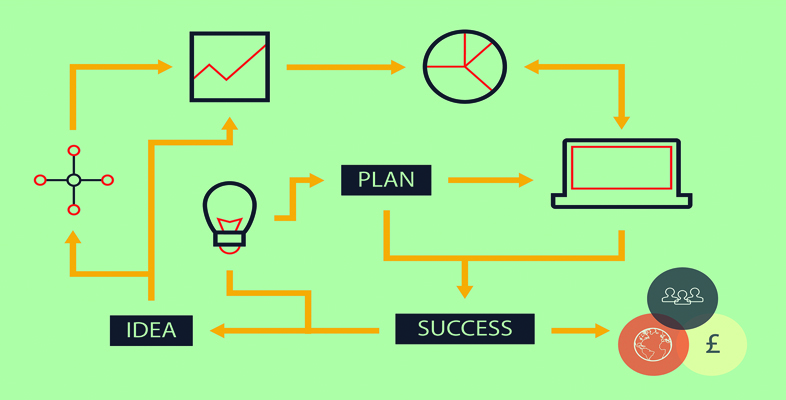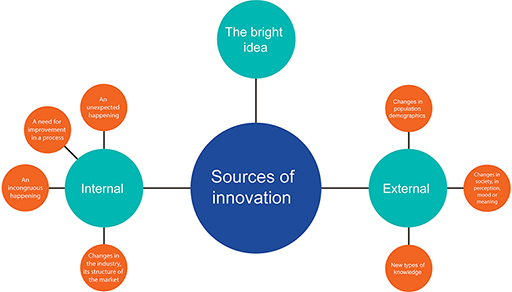3.1 Finding ideas or ideas finding you
Peter Drucker, a well-known management consultant, educator and writer on business and entrepreneurship, suggested that innovation may originate in three ways: internally, externally, or the ‘bright idea’.
When looking at Drucker’s sources of innovation, you might think of your idea as solving a persistent problem, or perhaps you are taking a good idea from somewhere and applying it in a different context. Technology continues to present opportunities to do things differently, or do them better, or even to do things that were not possible before.
Activity 2 Where are the opportunities to innovate?
The following list is taken from another Open University course where people cited the sources of their innovation. Starting with this list and adding to it based on your personal experiences or observations, group the sources of innovation in relation to whether they are internal, external or the elusive ‘bright idea’.
- past and present work and experience
- hobbies and leisure interests
- qualifications and studies
- new markets/uses for existing products
- solving a persistent problem
- research and development (R&D)
- patents, licences and research institutes
- invention
- opportunities from new technologies
- opportunities from economic/market changes
- changes in consumer behaviour
- complaints and irritations expressed by potential customers
- changes in rules and regulations
- imitating an idea from a different locality
- imitating an idea from a different industry
- improving an existing product
- films, TV and radio
- books, magazines and the press
- trade shows, exhibitions and conferences
- business and social networks
- family and friends.
| Internal | |
|---|---|
| An unexpected happening | |
| An incongruous happening | |
| A need for improvement in a process | |
| Changes in the industry, its structure or the market | |
| External | |
| Changes in population demographics | |
| Changes in society, in perception, mood or meaning | |
| New types of knowledge | |
| Bright idea |
Discussion
To help you think this through look at internal sources of ideas and take ‘incongruities’ as an example. Incongruities arise when you apply your experience and knowledge to things that don’t feel quite right, often in a sector you know quite well or an area you feel passionate about. Sometimes personal or professional life events are important sources of ideas. It could be solving a persistent problem, perhaps through imitating an idea from elsewhere and applying it in another context, or by introducing new technology. Perhaps ‘insider knowledge’ allows you to see possibilities in a sector that others might miss.
Change may be gradual, or may happen quickly – like a fashion. When people are quick to see possibilities they can exploit them to gain advantage. Entrepreneurs may be quicker than most at spotting opportunities.
The ‘bright idea’ or noting opportunities in the external environment are not mutually exclusive. Several of the examples used so far in this course from our entrepreneurs arise from frustration that leads people to seek change.
The aim of this course is to provide you with a deeper understanding of your own motivation, to zoom in on the source of your own idea. As you will see from examples that follow, ideas rarely emerge fully formed and are subject to almost constant refinement. Being able to spot where you can make important improvements is the key. Sometimes you may be too close to your own ideas and this is when looking at what others do can provide insights to your own situation.

